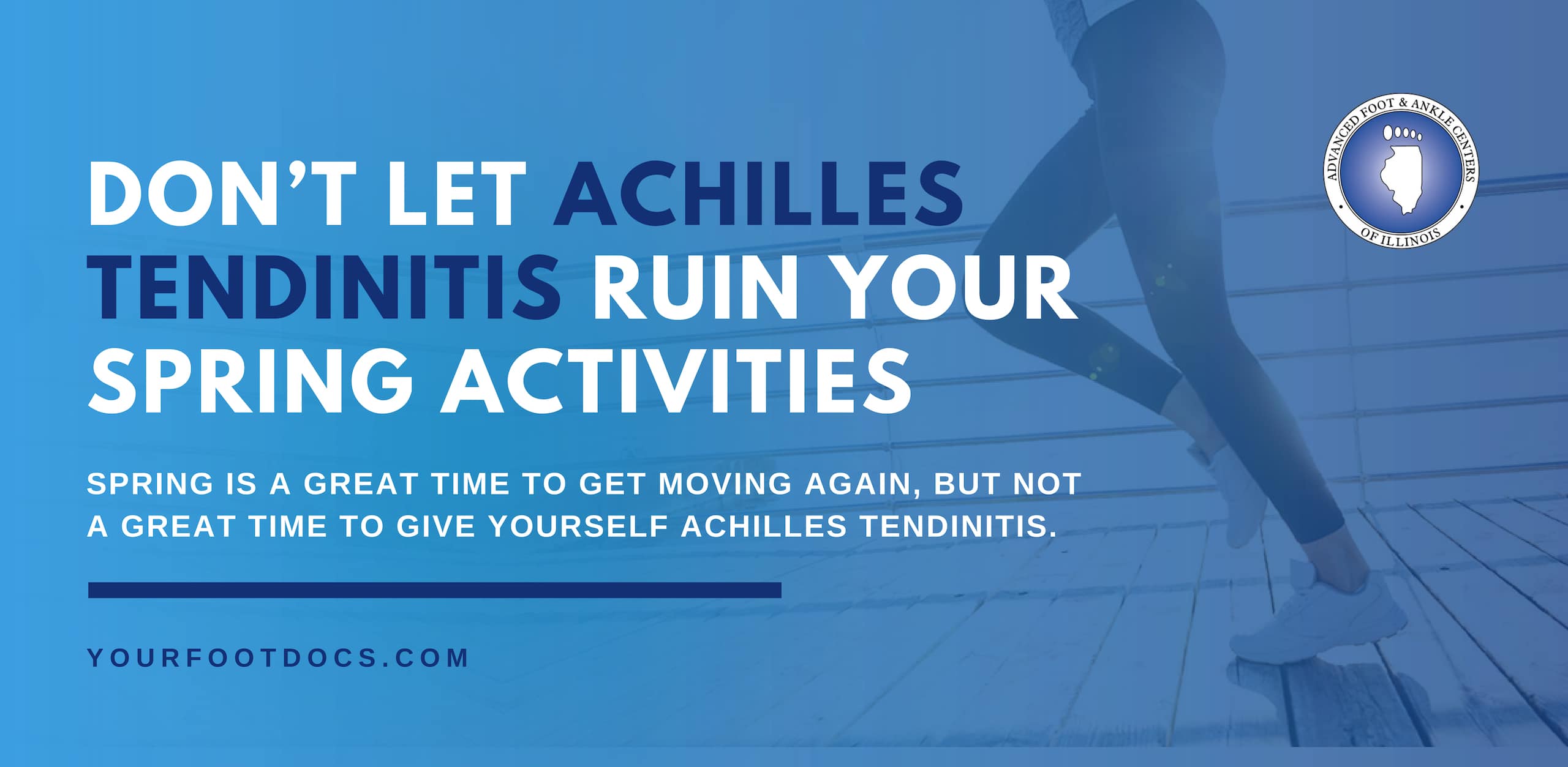Don’t Let Achilles Tendinitis Ruin Your Spring Activities
We know there are some of you out there who would go on running each week through the next Ice Age, but many people also tend to “hibernate” when it comes to physical activity in the winter.
But now, the days are getting warmer, the sun is staying out longer, and the reasons to get out and moving again are growing! So don’t ruin your enjoyment before it starts by giving yourself an injury like Achilles tendinitis.
Fortunately, it does not take a lot to reduce your risk of an Achilles injury—just a bit of common sense and commitment. And if you do happen to suffer a painful Achilles problem despite your best intentions, we are here to provide you the best care for that, too.
How to Be Kind to Your Achilles
The Achilles tendon is the largest tendon you have, and is built to take on a lot of stress in its job. But like any other part of the body, it is not invincible.
Achilles tendinitis commonly results from overuse: either too much strain has been placed on the tendon all at once, or it has had to endure a consistent amount of strain over time without having an opportunity to rest and recover.
If you are just starting into physical activity—or if it has been some time since you have done so due to cold, white reasons—you must account for the condition of your Achilles tendon (and the entirety of your form, really) to help prevent injury.
What does this mean when it comes to your workouts?
- Warm up before you begin. Every time. Spend at least 5-10 minutes before a run or other workout stretching and warming up. That includes moves that work the Achilles tendon as well as the calf muscles attached to it. Having both better prepared for moving will help prevent overuse.
Don’t leave your warm-up only at stretching, however. Performing some more dynamic movement is also helpful for good preparation. Walking or a light jog for a few minutes is a good choice.
- Start low and increase gradually. The best practice for any training regimen is to never start off with more than your body can handle. Trying to push yourself too hard too quickly is a ticket to a blow-out.
Start yourself off at a reasonable, steady pace and make a commitment to not increase your intensity more than 10 percent week to week. This might mean a 10 percent increase in distance or 10 percent more time—whichever applies best for you. And even then, if the increase feels like too much a strain, dial it back some. The 10 percent guideline is only a cap; it is not mandatory.
- Mind your terrain. Stress to the Achilles tendon increases up and down inclines, as well as with use of stairs. We are not saying you should stick to flat terrain only, but take care to be well warmed up and prepared before taking on hills and steps.
- Wear the right shoes. Footwear choice matters greatly when it comes to giving your feet and ankles the support they need. Different activities place different types of stress on this area, and shoes made for different sports will provide better support for those demands.
If you are looking for good support for your Achilles tendon, in general, you will want cushioning in the heel and a good amount of arch support. Shoes that are worn out will not provide the support you need. For running shoes in particular, a good time to replace them is after about 300-500 miles of use.
Treating Achilles Tendinitis
If you are experiencing heel pain during activities, the first, best thing you can do is hold off until you have a chance to visit us. Doing more of what is hurting you is only going to increase the risk of making the problem worse. An inflamed Achilles tendon might become a torn one, and you do not want that.
If Achilles tendinitis is the diagnosis, we’re afraid that rest will be a very likely recommendation for treatment. Your body needs the time away from stressful activities to recover, and there isn’t much we can do to fight nature.
We may also recommend medication to help relieve pain and any inflammation. Additional methods that can both aid in recovery and help prevent future problems include specific exercises to strengthen the tendon and calf muscles, and orthotic devices to offload excess pressure from certain areas of the foot.
If conservative treatments don’t work, or your Achilles injury is particularly severe (such as a large tear or rupture), surgery may be required instead. If so, we will be sure to fully discuss all your options with you so you can make an informed decision.
Help for All Forms of Heel Pain
Taking measures to protect yourself from overuse injuries is not just good at reducing your Achilles tendinitis risk. It can also help you prevent stress fractures, plantar fasciitis, and other foot and ankle problems that can plague athletes.
If you ever need help with a sports injury or other problem, please don’t hesitate to contact us at any of our area offices:
- Chicago – (773)-736-FEET (3338)
- Joliet – (815) 553-0990
- Orland Park – (708) 460-8688
- Palatine – (847) 358-7005
- Schaumburg – (847) 985-8380
- Waukegan – (847) 249-FEET (3338)
- Kenosha – (262) 652-6555

